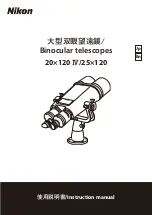
15
Cleaning the Telescope’s Optics
1. Observer 90mm EQ Refractor
Any quality optical lens cleaning tissue and optical lens clean-
ing fluid specifically designed for coated optics can be used to
clean the lenses of your telescope and eyepieces. Never use
regular glass cleaner or cleaning fluid designed for eyeglass-
es. Before cleaning, remove any loose particles or dust from
the lens with a blower bulb or soft brush. Then apply some
cleaning fluid to a tissue, never directly on the optics. Wipe the
lens gently in a circular motion, then remove any excess fluid
with a fresh lens tissue. Oily fingerprints and smudges may
be removed using this method. Use caution; rubbing too hard
may scratch the lens. On larger lenses, clean only a small
area at a time, using a fresh lens tissue on each area. Never
reuse tissues.
2. Observer 114mm and 134mm EQ Reflectors
You really should not have to clean the telescope’s mirrors.
Covering the telescope with the dust cap when it is not in use
will help prevent dust from accumulating on the mirrors. Even
a little dust on the mirror surfaces will not affect the optical
performance in any way. If you feel the mirrors need to be
cleaned, please contact Orion Customer Service at 800-676-
1343 for guidance.
VIII. Useful Optional
Accessories
• Moon Filter – A 1.25" Moon filter will cut down the strong
glare of sunlight reflected from the Moon, making Moon
viewing more comfortable and revealing more surface
detail. The filter threads into the bottom of the eyepieces
that came with your telescope.
• Motor Drive – A motor drive, which attaches to the right
ascension axis of an equatorial telescope mount, enables
your telescope to “track” the motion of stars and other
celestial objects as they drift slowly from east to west in
the night sky. This keeps them in the eyepiece field of view
indefinitely, instead of drifting out of sight.
• Barlow Lens – A 2x Barlow lens doubles the magnifying
power of any eyepiece it’s used with, giving you a big
power boost to get in closer to your target object. You just
insert it between the diagonal and the eyepiece.
• Planisphere – A nifty “star wheel” that shows what stars
and constellations are visible in the sky at any time of any
night. Just set the date and time see a mini representation
of your local night sky. Great for identifying what you see
and planning an evening’s observing session.
• Star Map – More detailed than a planisphere, a star
map is essential for locating interesting celestial objects
to observe with your telescope. Nowadays many mobile
astronomy apps feature customizable star maps that you
can access on your smartphone or tablet while you’re at
the telescope.
When bringing the telescope inside after an evening’s view-
ing it is normal for moisture to accumulate on the lenses and
mirrors due to the change in temperature. We suggest leaving
the telescope and eyepieces uncovered overnight to allow the
condensation to evaporate.
Out
of
collimation
Collimated
Figure 24.
A star test will determine if the telescope's optics are
properly collimated
.
Figure 23.
The tilt of the primary mirror is adjusted using the three
pairs of collimation knobs and lock screws on the back end of the
optical tube.
Collimation knob
Lock screw


































